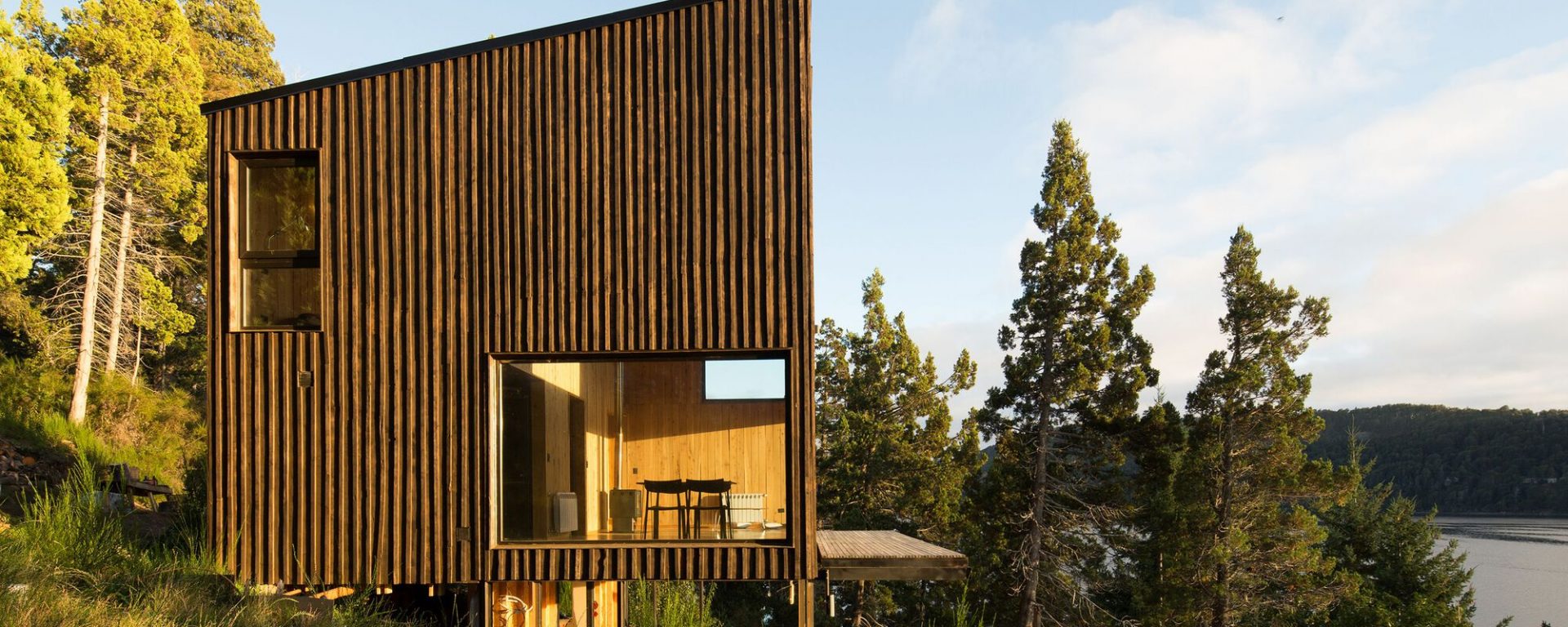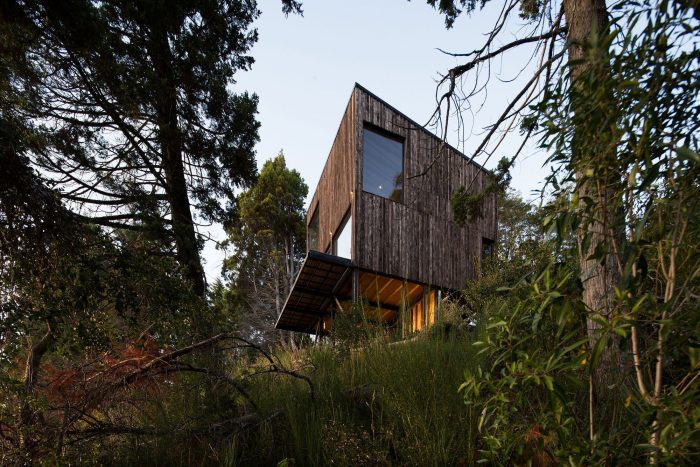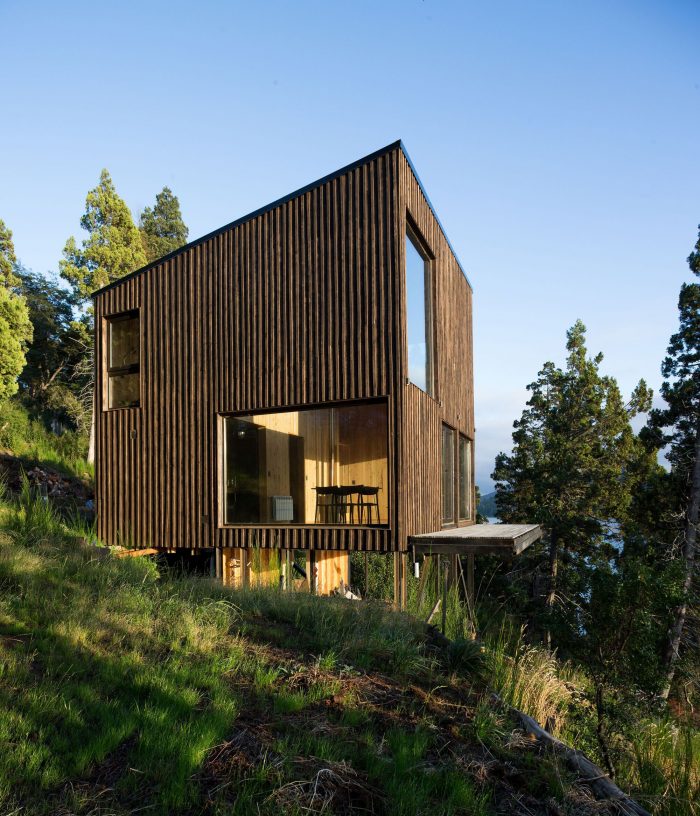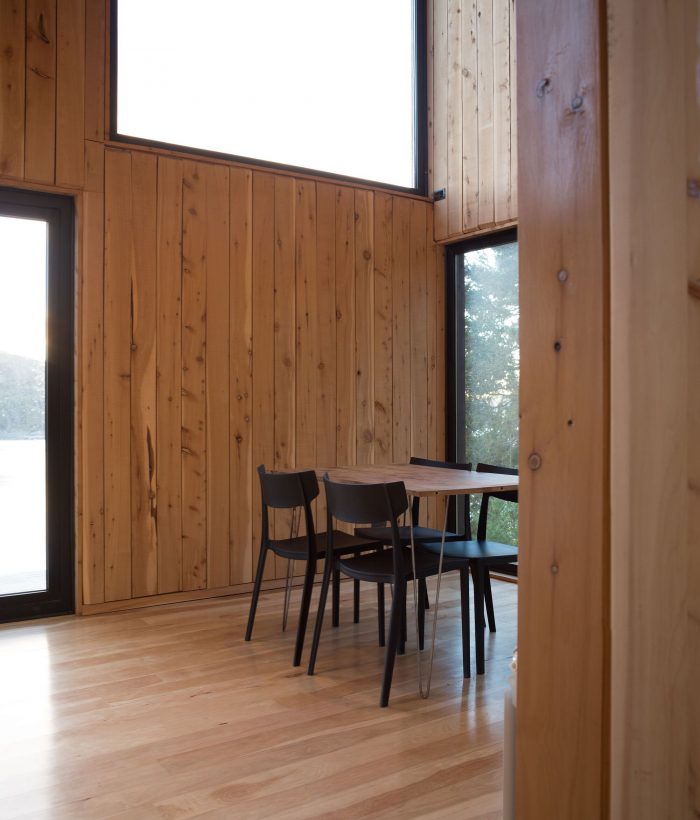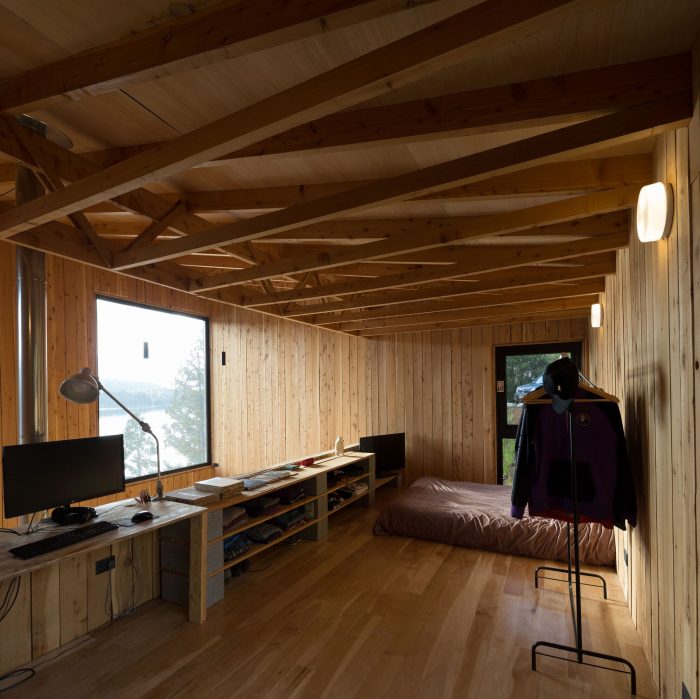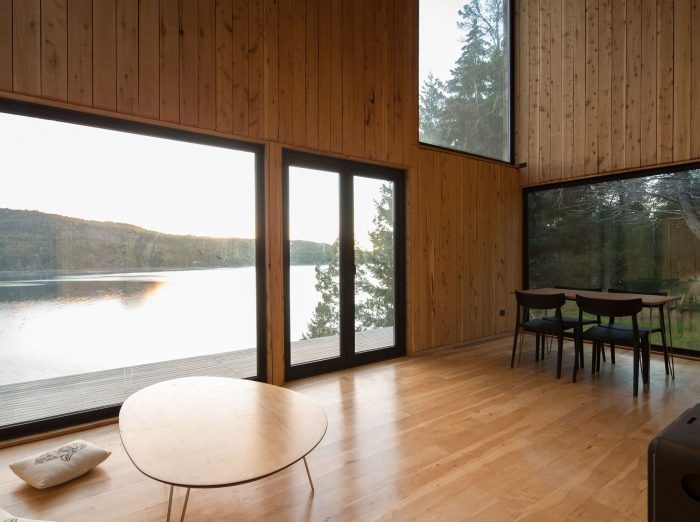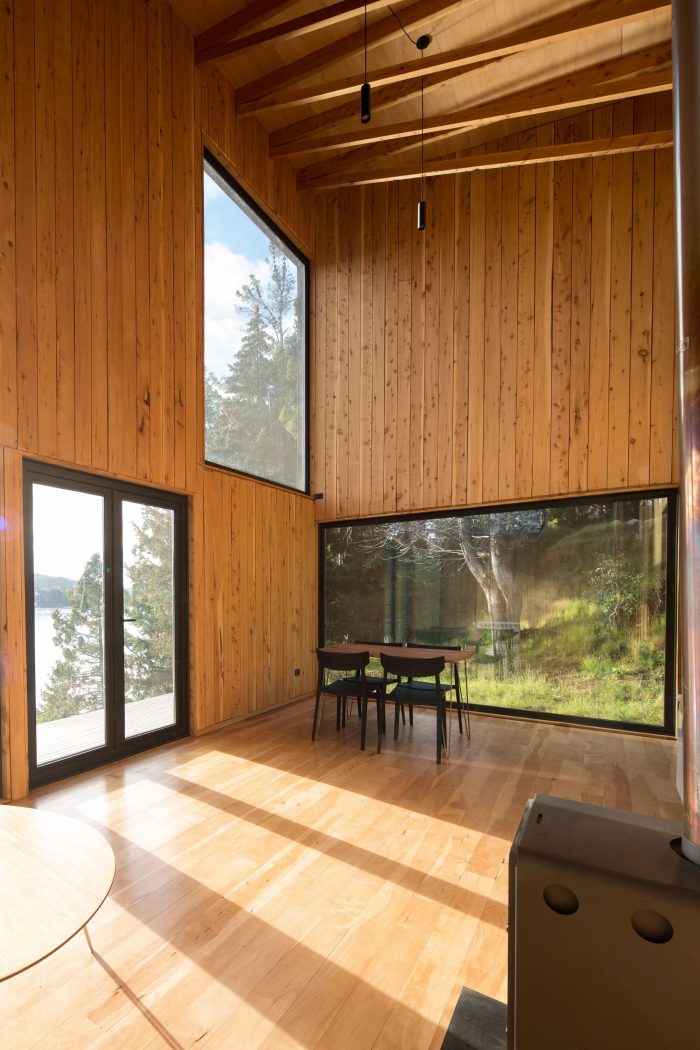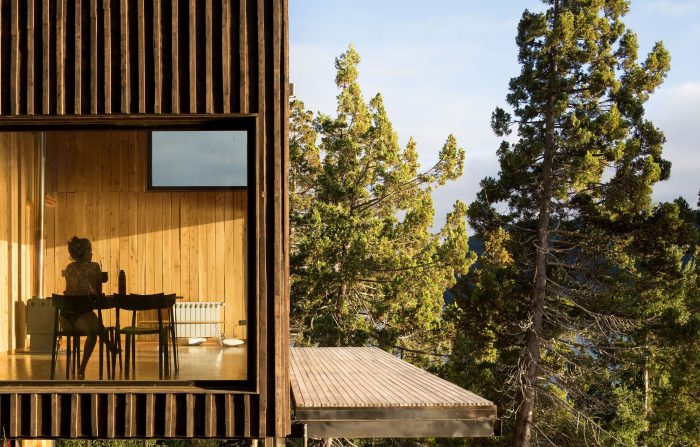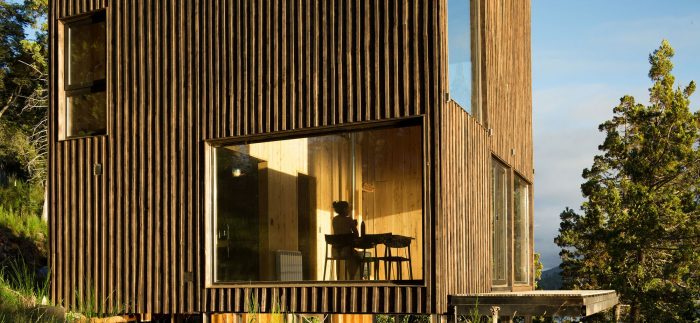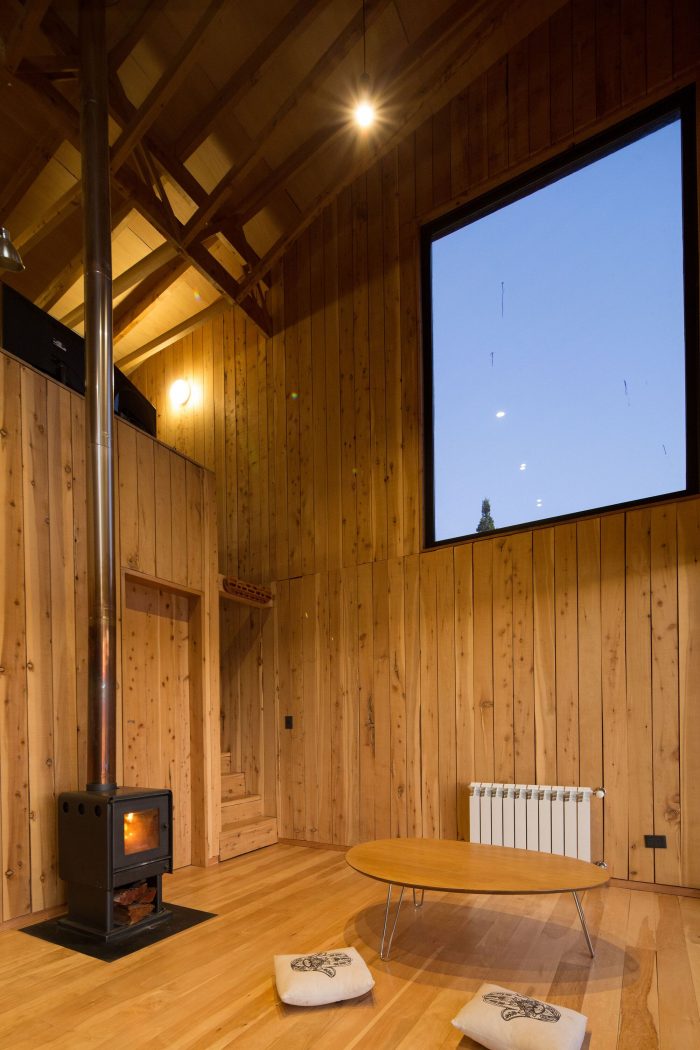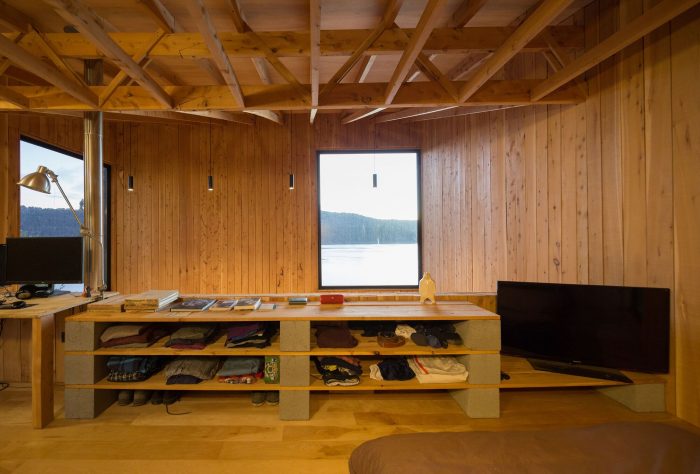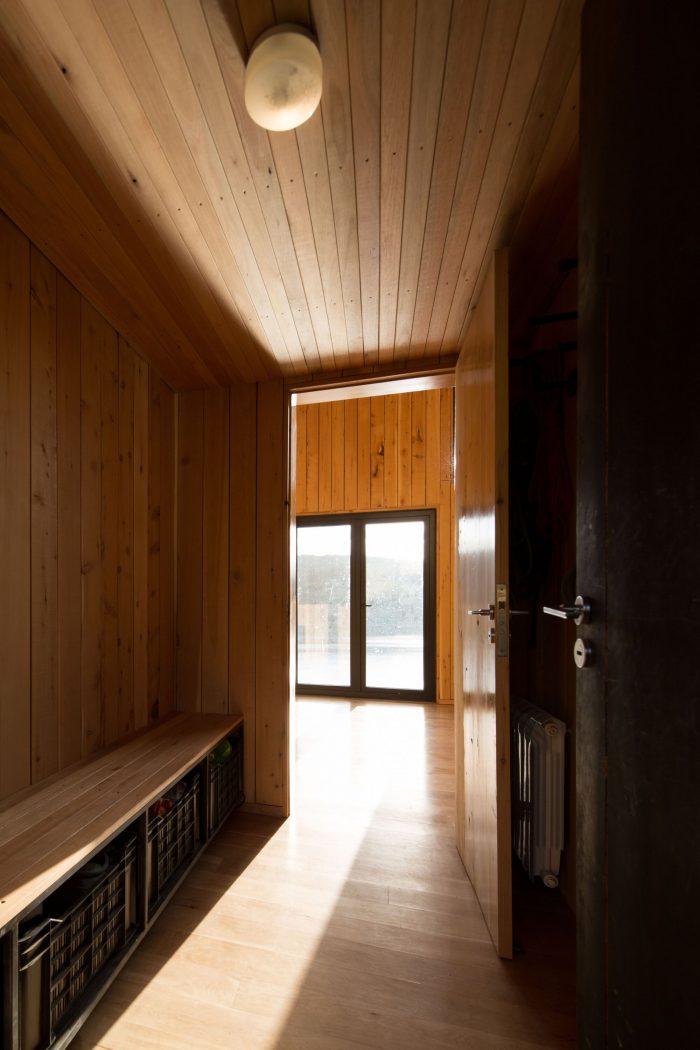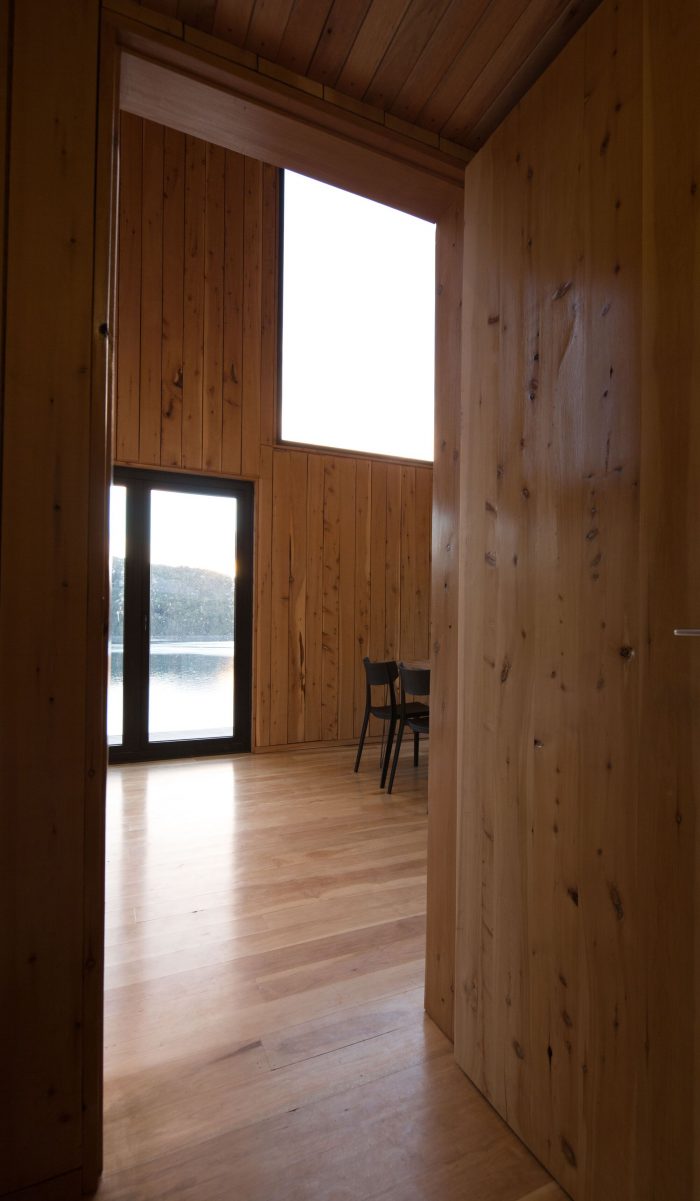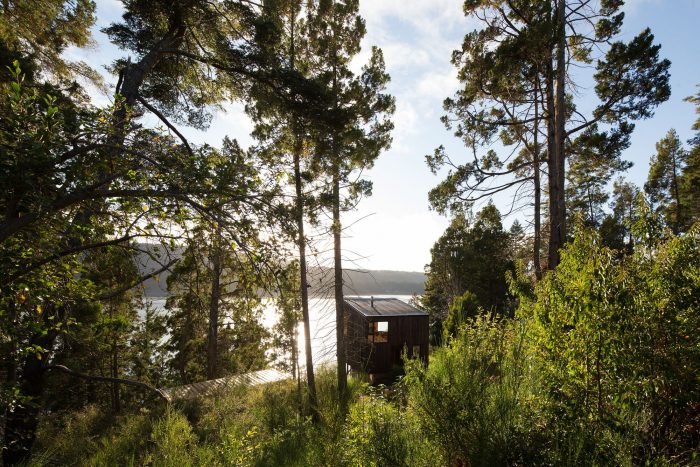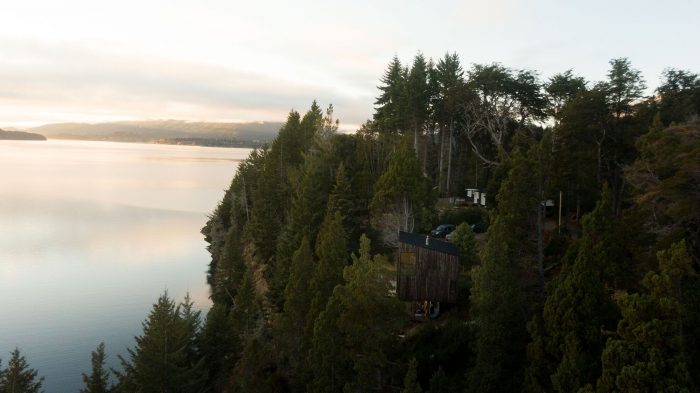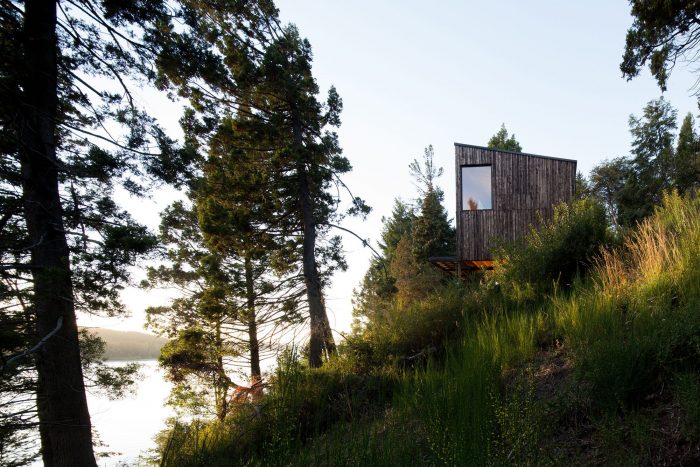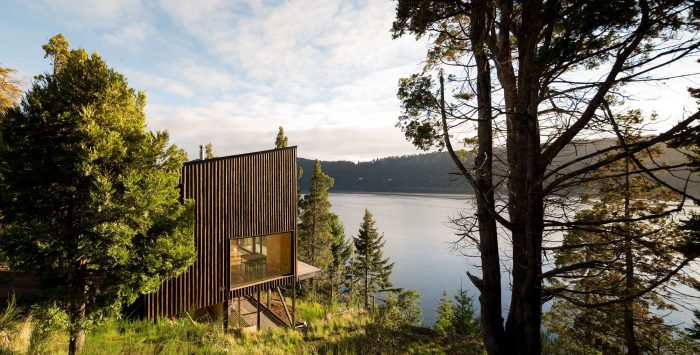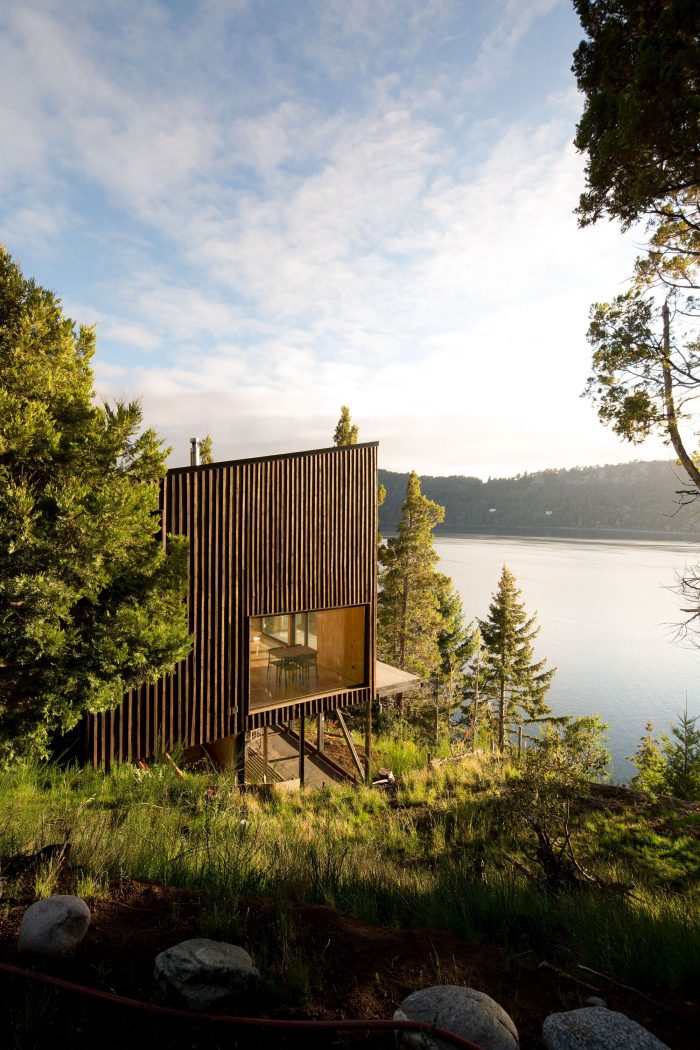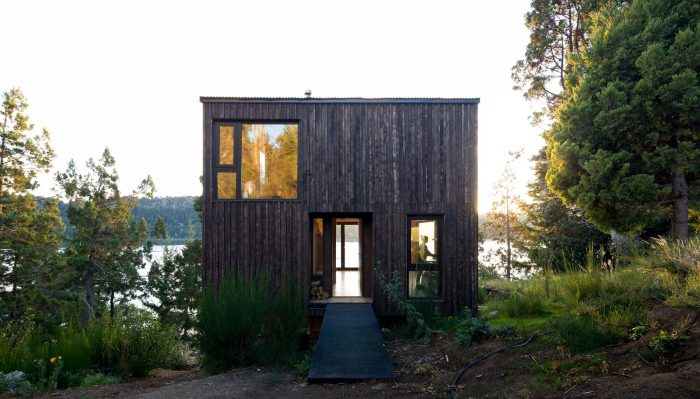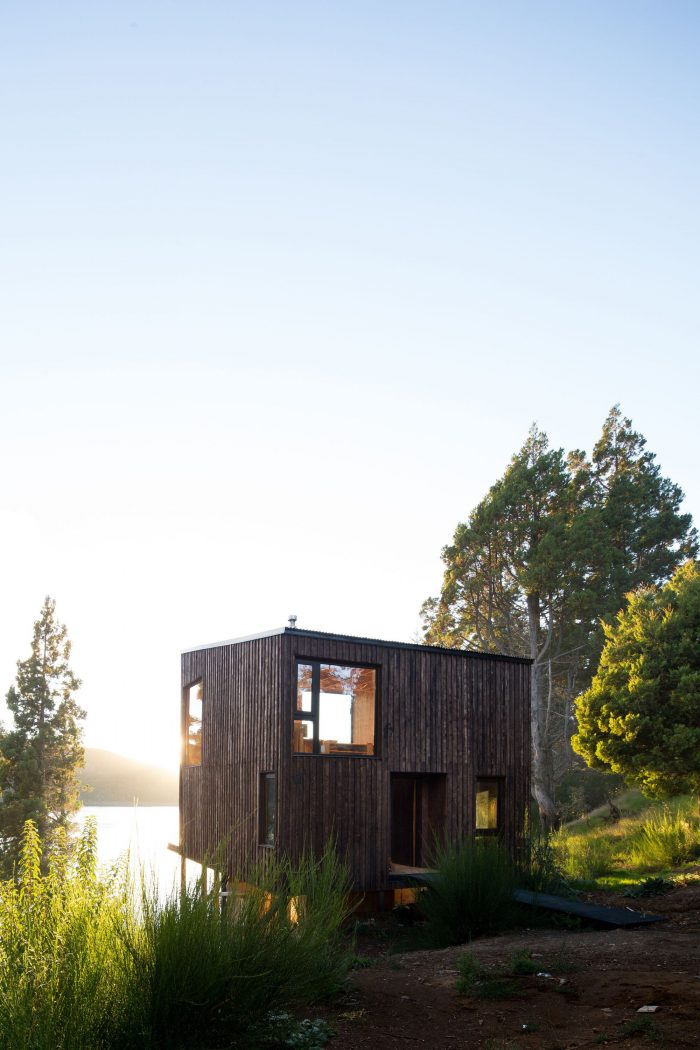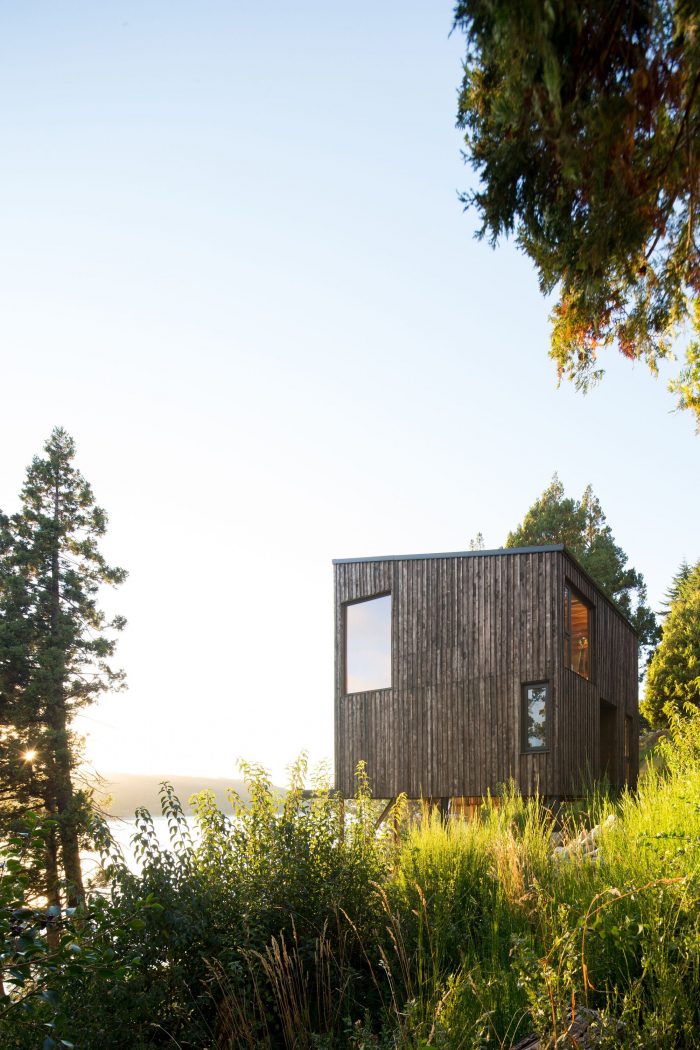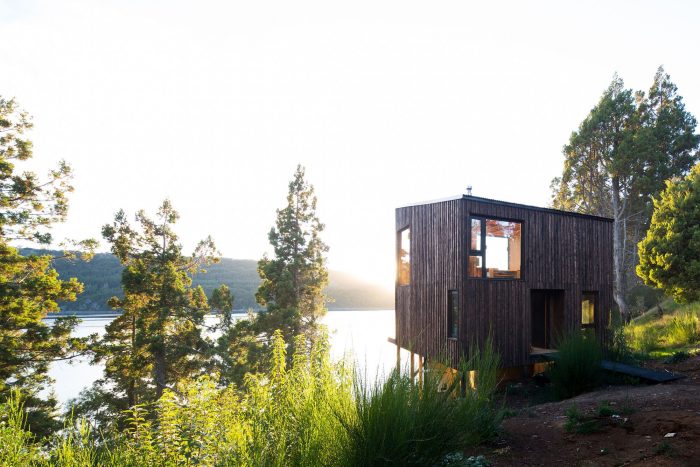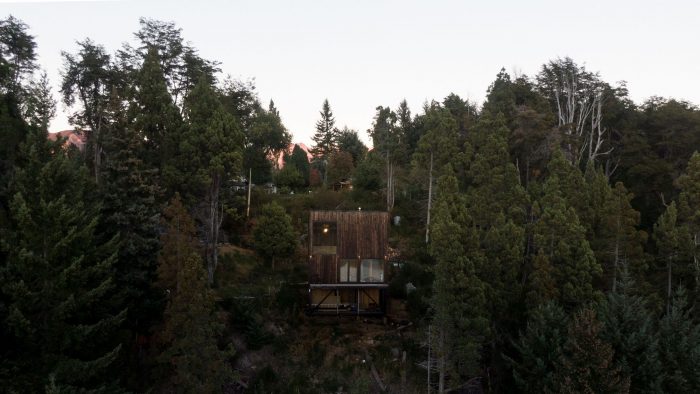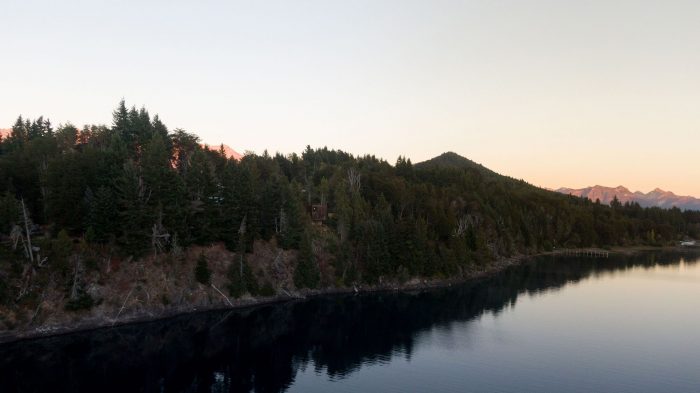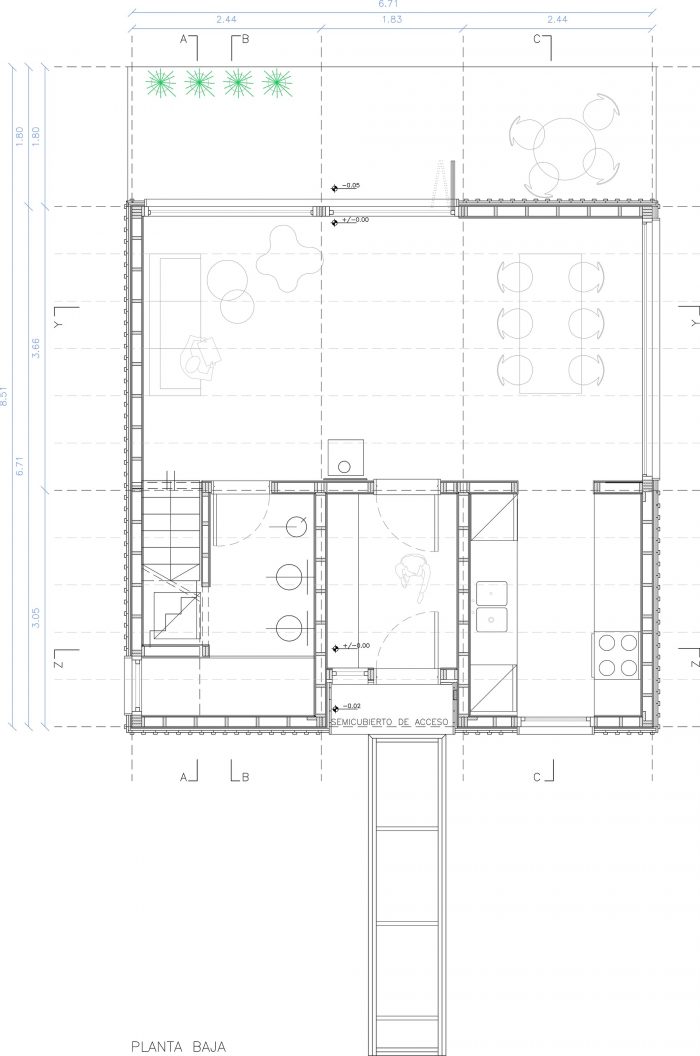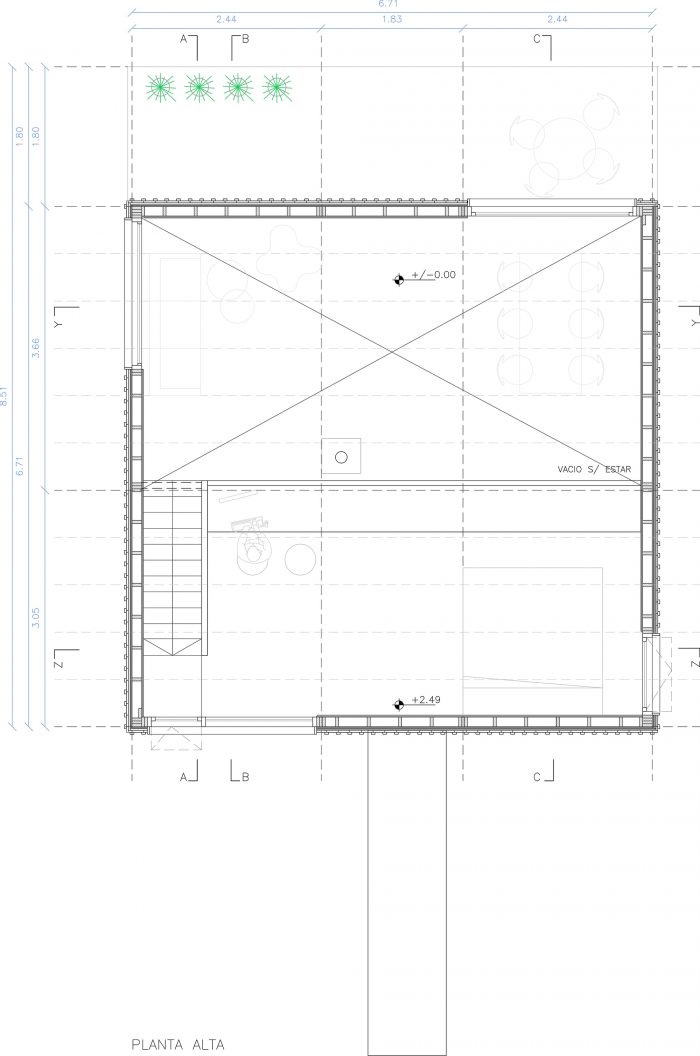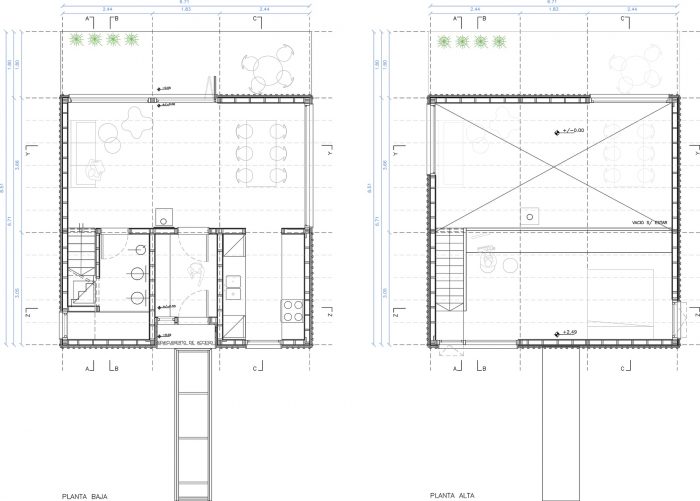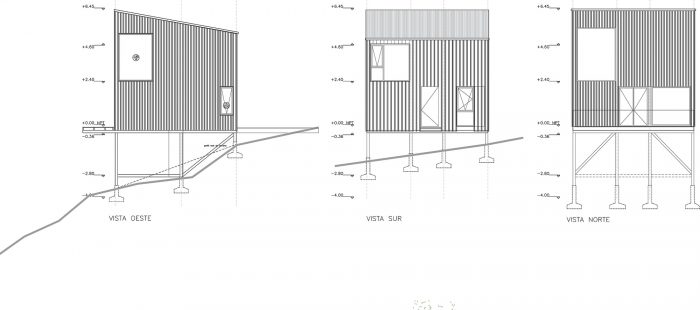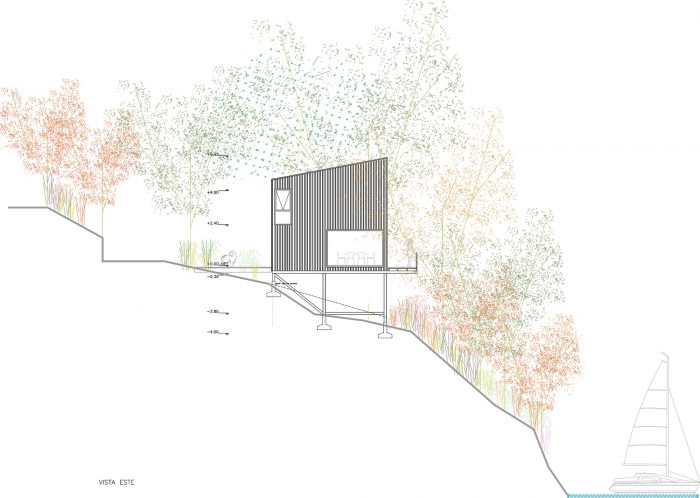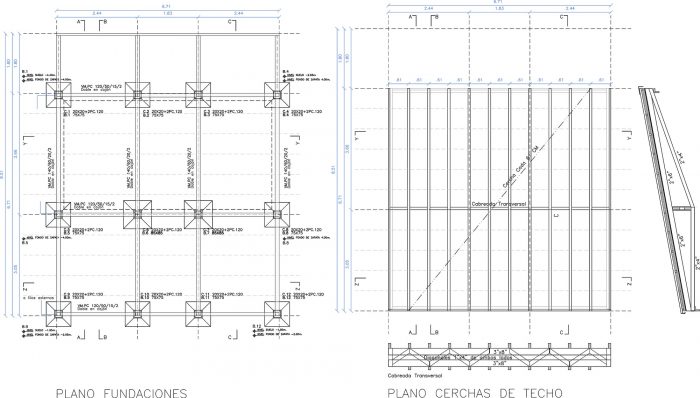这是一个寻求与地方和参与其发展的人建立强大关系的作品。对于这个地方来说,这项工作与自然构成了强烈的对立,但在整个建设过程中,对自然和正确的共存方式以及对环境的操纵都给予了极大的尊重。对于参与者来说,这是一项关于该地使用的材料和方法的研究工作,是建筑师和建筑商角色之间的团结承诺,与伟大的同事合作,使共同学习任务成为可能。
It is a work that seeks a strong relationship with both the place and those involved in its development. As for the place, the work poses strong opposition to nature but with enormous respect for it and the correct way of coexisting and manipulating the environment throughout the construction process. As for the participants, it is a research work regarding the materials and methods used at the place, a solidarity commitment between the role of the architect and the builder, with the collaboration of great colleagues that made possible the learning of tasks together.
这个地方位于Nahuel Huapi湖的东北面,这个地方有80%的坡度,使得地基任务和土地征用非常困难。由于这些原因,我们决定用一个独立的钢筋混凝土基座和嵌入其中的铁柱系统来建造房屋,以解决所有地形上的缺陷,确保在坚实的地层上有正确的地基水平。这个系统是影响最小的系统,不仅可以方便和更好地适应合适的土壤,还可以通过不干扰大雨或融雪的水流来延长其持续时间。坡和反坡将作为加固物来引导水,并自然地防止地基-土壤交汇处的侵蚀。
The place is located on the northeast face of Nahuel Huapi Lake, the location sector has a slope of 80% making foundation tasks and land appropriation extremely difficult. For these reasons, it was decided to find the house with a system of individual reinforced concrete footings and iron columns embedded in them in order to take all the topographical imperfections, ensuring the correct level of foundation on firm strata. This system is the one with the least impact, not only allows easy and better adaptation to suitable soil but also extends its duration over time by not interfering with the water flows from heavy rains or snowmelt. Slopes and counter-slopes will serve as reinforcement to channel the water and naturally prevent the erosion of the footing-soil meeting.
一旦连接房子的地基完成,工作的另一个重要阶段就出现了,房子本身,用俄勒冈松的平台框架结构和柏树的覆层和可见结构制成。外部覆层选择了日本的 “烧柏木 “技术,这是与Hermanos Delfino合作的一个伟大赌注。在内部,由于使用了无限的天然柏木板,我将其命名为 “Sashimi风格”。屋顶结构是通过倒置的多片柏木桁架来实现的,使整个房屋在没有柱子的情况下也能被覆盖。小的可操作部分被一起使用,以达到一个巨大的承载和支撑能力。
Once the linking house-ground is finished, the other great stage of the work emerges, the house itself, made with a Platform frame structure of Oregon pine and cladding and visible structures in cypress. For the exterior cladding was chosen the Japanese technique Shou Sugi Ban (cypress burned), is a great bet in conjunction with Hermanos Delfino. Inside, the “sashimi-style”, was named by me, due to the infinity of natural cypress boards used. The roof structure is made by means of an inverted multi-piece cypress truss, allowing the entire house to be covered without the presence of columns. Small maneuverable sections are used together to achieve a great bearing and bracing capacity.
关于建筑方案,房子没有一个层次,因此创造了一个没有碎片的流动空间。它的工作原理是一个简短的流动路径序列,主要由窗户和空间的连续性支持,在任何时候都寻求重新创造一个单一的同质化的氛围,并由位置和它的特殊性滋养。
Regarding the architectural proposal, the house doesn’t have a hierarchy, creating with this a fluid space without fragmentation. It works on a short sequence of flowing paths supported largely by the windowing and spatial continuity of the mass that at all times seeks to recreate a single homogeneous atmosphere nourished by the location and its particularities.
Architects: Manuel Ciarlotti Bidinost
Area : 678 ft²
Year : 2021
Photographs :Manuel Ciarlotti Bidinost, Lucas Guardincerri
Manufacturers : Casa Palm, Ecowindows, Hiza, Les Pisos de Madera
Lead Architect : Manuel Ciarlotti Bidinost
Preliminary Project : Angela Bielsa, Luciana Breide, Manuel Ciarlotti Bidinost
Collaborators : Ramiro Schere, Santiago Conte Mac Donell
Engineer : Tomás Eckardt
Concrete And Iron Construction : Di Tata Construcciones: Miguel Di Tata, Hugo Noguera, Carlos Di Tata
Wood Construction : Hermanos Delfino. Javier y Joaquin Delfino
General Help : Camilo, Agustin, Facu, Juan y amigos
Electrical Installations : David Fischer
Sanitation : Alejandro Villaroel
Program : Vivienda unifamiliar
City : San Carlos de Bariloche
Country : Argentina

